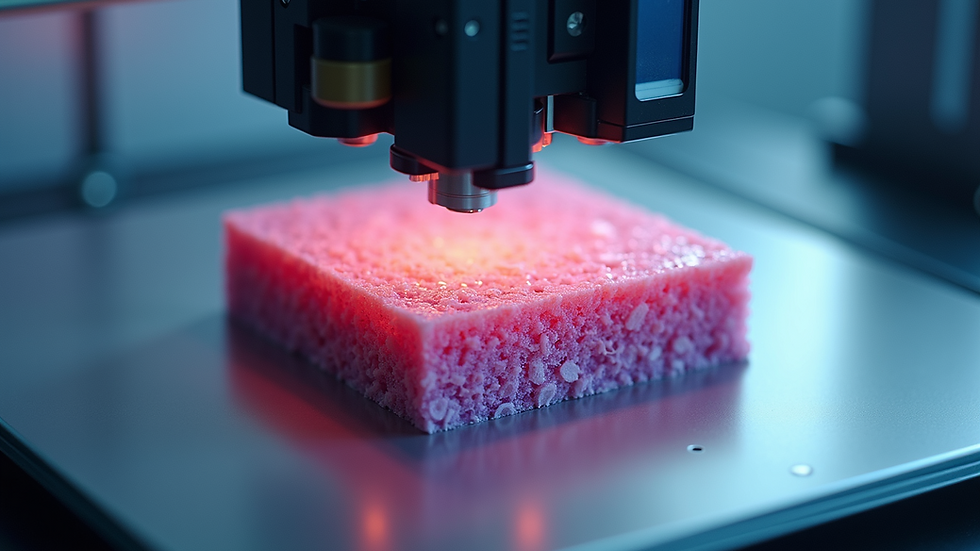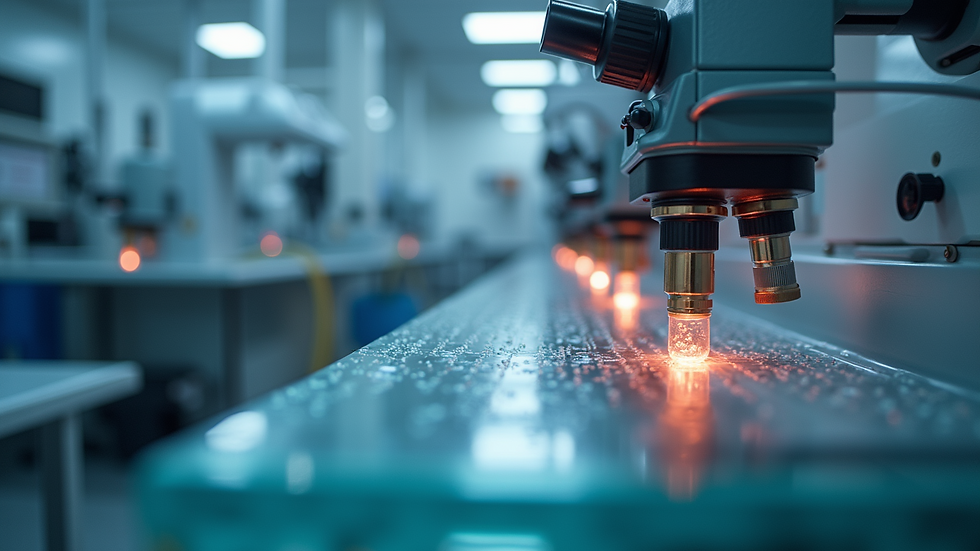Innovations Driving Regenerative Medicine Forward
- LeNae Goolsby

- Aug 11
- 4 min read
Regenerative medicine is transforming healthcare by offering new ways to repair or replace damaged tissues and organs. This field combines biology, engineering, and technology to stimulate the body's natural healing processes. Recent innovations are accelerating progress, making treatments more effective and accessible. This article explores the latest advancements driving regenerative medicine forward and how they are reshaping patient care.
Breakthrough Technologies in Regenerative Medicine
The foundation of regenerative medicine lies in understanding how cells grow, differentiate, and repair tissues. Recent technological breakthroughs have enhanced this understanding and enabled new treatment methods.
One major innovation is 3D bioprinting. This technology allows scientists to print living tissues layer by layer, creating complex structures like skin, cartilage, and even organs. 3D bioprinting uses bioinks made from living cells and biomaterials, which can be customized for each patient. This approach reduces the risk of rejection and improves healing outcomes.
Another key technology is gene editing, particularly CRISPR-Cas9. Gene editing enables precise modifications to DNA, correcting genetic defects that cause diseases. In regenerative medicine, gene editing can enhance stem cells or immune cells to improve their therapeutic potential.
Stem cell therapy continues to evolve with better methods to isolate, grow, and differentiate stem cells. Scientists are developing ways to direct stem cells to specific tissues, increasing the efficiency of regeneration.

The Role of Regenerative Medicine in Healing and Recovery
Regenerative medicine focuses on restoring function by repairing damaged tissues rather than just managing symptoms. This approach is particularly promising for conditions like joint pain, heart disease, and neurodegenerative disorders.
For example, platelet-rich plasma (PRP) therapy uses a patient’s own blood components to stimulate healing in injured joints and muscles. PRP injections have shown success in reducing inflammation and promoting tissue repair, offering an alternative to surgery.
Tissue engineering combines cells, scaffolds, and growth factors to create functional tissues. This method is used to regenerate skin for burn victims or cartilage for osteoarthritis patients. The scaffolds provide a structure for cells to grow and organize, mimicking natural tissue.
Patients seeking advanced treatments can explore regenerative medicine services that offer personalized therapies designed to accelerate healing and improve quality of life.

What are the 5 regenerative medicine?
Understanding the main types of regenerative medicine helps clarify how this field is advancing. The five key categories include:
Stem Cell Therapy - Using stem cells to replace or repair damaged tissues. These cells can differentiate into various cell types, making them versatile for many conditions.
Tissue Engineering - Creating biological substitutes by combining cells with scaffolds and growth factors to restore tissue function.
Gene Therapy - Modifying genes to correct defects or enhance cell function, often used alongside stem cell treatments.
Platelet-Rich Plasma (PRP) Therapy - Concentrating platelets from blood to promote healing and reduce inflammation in injured tissues.
Immunomodulation - Adjusting the immune system to support tissue repair and reduce chronic inflammation.
Each of these approaches offers unique benefits and challenges. Combining them can lead to more effective and personalized treatments.
Emerging Trends Shaping the Future of Regenerative Medicine
Several trends are shaping the future landscape of regenerative medicine, making treatments more precise and widely available.
Artificial intelligence (AI) and machine learning are being used to analyze large datasets from patient records and lab experiments. AI helps identify patterns that predict treatment outcomes and optimize therapy protocols.
Nanotechnology is another exciting area. Nanoparticles can deliver drugs, genes, or growth factors directly to damaged cells, improving targeting and reducing side effects.
Personalized medicine is becoming a reality with advances in genomics and biomarker discovery. Treatments can be tailored to an individual’s genetic profile, increasing effectiveness and minimizing risks.
Wearable devices and remote monitoring tools are also enhancing patient care by tracking healing progress and adjusting treatments in real time.

Practical Applications and Patient Impact
The innovations in regenerative medicine are not just theoretical - they are making a real difference in patient outcomes.
For example, patients with osteoarthritis can benefit from stem cell injections that reduce pain and improve joint function without surgery. Burn victims receive engineered skin grafts that heal faster and reduce scarring.
Heart disease patients are seeing progress with regenerative therapies that repair damaged heart tissue after a heart attack. Similarly, neurodegenerative diseases like Parkinson’s are being targeted with stem cell and gene therapies to restore lost function.
To maximize benefits, patients should:
Consult with specialists who offer advanced regenerative medicine services.
Understand the risks and benefits of each treatment option.
Follow post-treatment care plans closely to support healing.
These practical steps help ensure the best possible outcomes from cutting-edge therapies.
Looking Ahead: The Promise of Regenerative Medicine
The future of regenerative medicine is bright, with ongoing research and innovation pushing the boundaries of what is possible. As technologies improve and become more affordable, more patients will have access to life-changing treatments.
Collaboration between scientists, clinicians, and engineers will continue to drive breakthroughs. Ethical considerations and regulatory frameworks will also evolve to ensure safe and effective therapies.
Ultimately, regenerative medicine holds the promise of not just treating symptoms but restoring health and function at a fundamental level. This shift could revolutionize medicine and improve millions of lives worldwide.




Comments